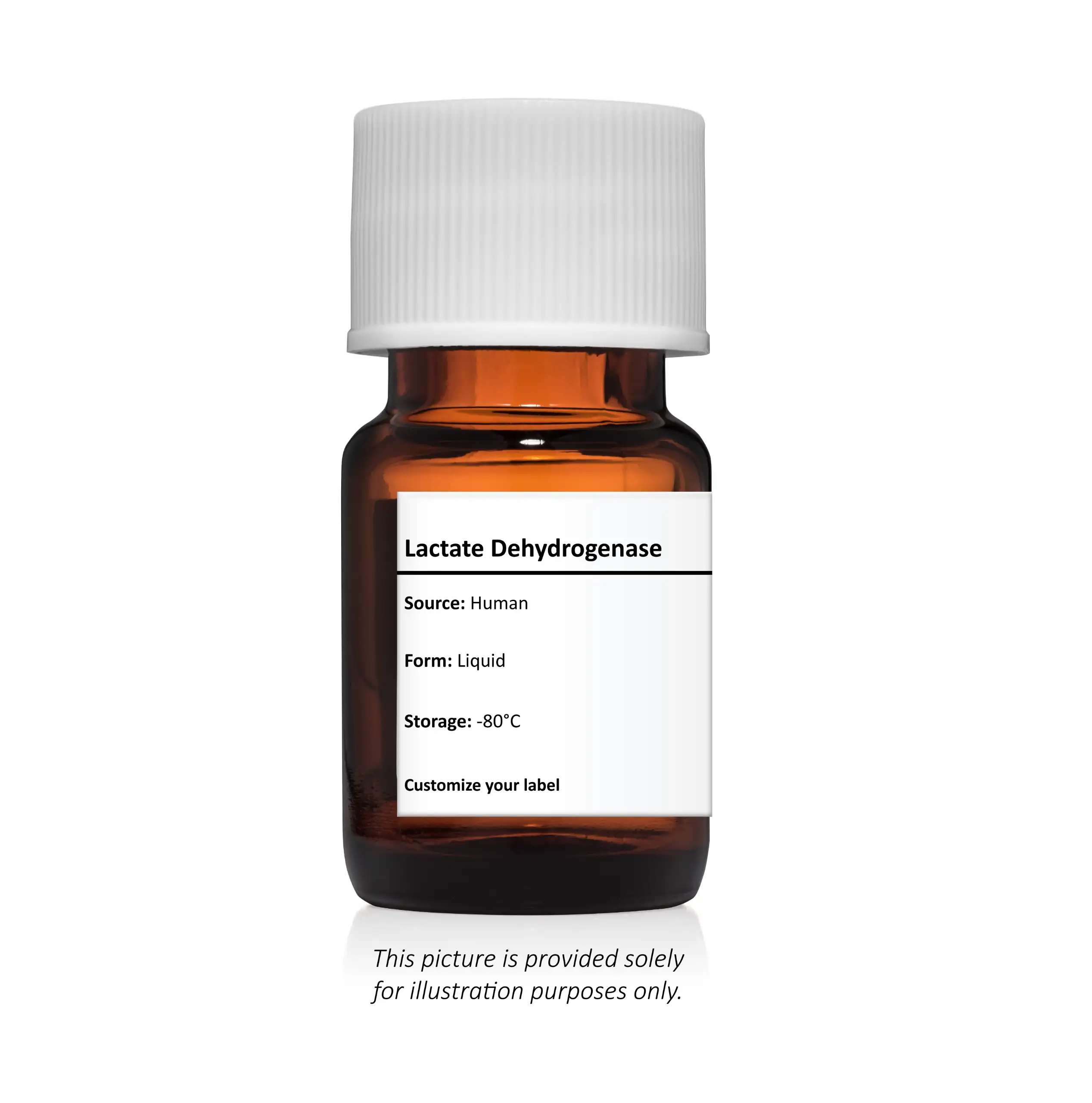Lactate Dehydrogenase (Lactic Dehydrogenase/LDH/ LD)
Lactate dehydrogenase catalyzes the reversible oxidation of lactate to pyruvate using the cofactor NAD+.
| Product Specifications | |
|---|---|
| Source | Human |
| Form | Liquid |
| Purity | Partially Purified |
| Storage | -80°C |

The reverse reaction is actually the thermodynamically favored one under physiological conditions. One of its primary purposes is to replenish the pool of NAD+ under conditions of oxygen insufficiency in order to allow glycolysis to continue unabated. LDH is a tetrameric enzyme, and analogously to CK, there are two common gene products for the subunits. One is named for its predominance in muscle tissue and therefore known as the subunit. The other is named for its predominance in heart muscle and so is called the H subunit. This results in five permutations. The H4 enzyme is referred to as LDH-1 (or LD1/LD-1), the H3M1 as LDH-2 (LD2/LD-2), the H2M2 as LDH-3 (LD3/LD-3), the H1M3 as LDH-4 (LD4/LD-4) and finally the M4 enzyme as LDH-5 (LD5/LD-5)2.
